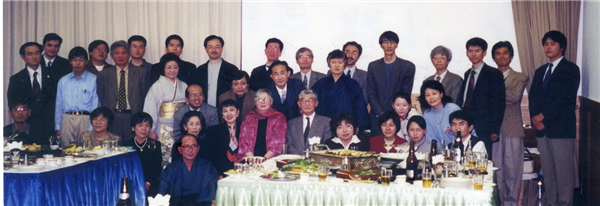古典学エッセイ
Elizabeth Craik: Japan and the classics
‘Why teach Greek and Latin in Japan?’ I was often asked that question when I was fortunate enough to hold a post in bungakubu at Kyodai for five years (from 1997 to 2002). And I am sure that students of western classics are often asked the corollary question, ‘Why study Greek and Latin in Japan?’ There are many possible answers to these questions; most, though I believe them to be valid and cogent, are obvious enough and might be made anywhere in the world. A prime answer, of course, is that knowledge of the ancient languages and understanding of ancient culture is a fundamental key, giving access to the languages and history of the modern world, especially though not only the world of Europe. The answers I suggest now are perhaps more novel and have particular relevance to Japan.
New insights into ancient literature can be achieved through comparative study of the rich cultural traditions of Japan. Of course, Greek tragedy is not the same as Noh drama and Greek comedy is not the same as Kyogen; Heike is not to be equated with Homer; haiku and tanka differ from ancient epigrams. Nevertheless, there are striking parallels. Wide similarities in generic conventions are readily apparent. On closer scrutiny, certain similarities in content (especially in social exchange) and in expression (especially in formulaic elements) can be traced.
The polytheistic religions of ancient Greece and Rome, with their weather gods and local deities, are mysterious and alien to western scholars. But everyone living in Japan knows the ambience and procedures of different shrines and temples. In myth as well as cult there are similarities, sometimes elusive and fleeting, always suggestive and fascinating. These can be fully understood and appreciated only by Japanese scholars and students.
In ancient medicine, some therapeutic procedures are very similar to the acupuncture and moxibustion of traditional eastern medicine. While acupuncture is now practised in the west, it remains a minority style of treatment and moxibustion is almost completely unknown. Those familiar from birth to the use of kampo in conjunction with ‘scientific’ medicine have a ready route to fuller understanding of ancient practices.
These are only a few examples from the many I might suggest for inter-disciplinary study. My hope is rather that young people in Japan will see further parallels for themselves and be interested enough to pursue them. You may think at first that language learning is difficult and daunting. But after all you know Japanese and no language is more difficult and daunting than that!
Elizabeth Claik (St. Andrews)

「2002.3.25 退官記念パーティー、前列中央クレイク先生」